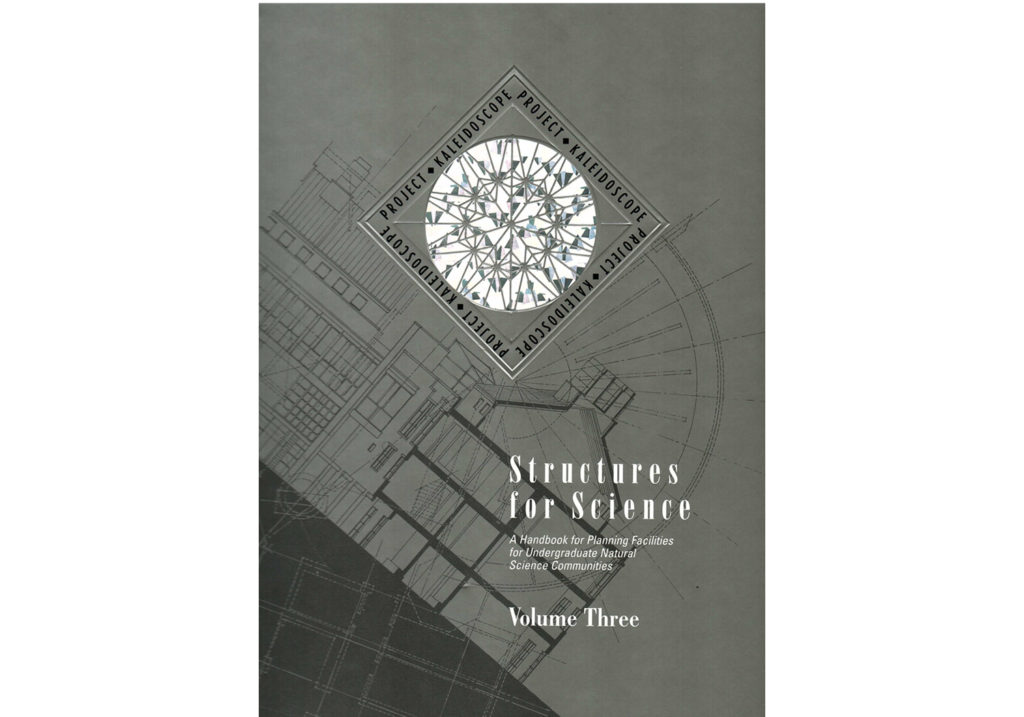This step-by-step guide to planning facilities is intended for use by colleges and universities that are thinking about, or in the process of planning for, new or renovated spaces for their undergraduate programs in science and mathematics. It is useful to architects, lab designers, and other professional groups involved with planning and constructing spaces and structures for undergraduate science programs. Structures for Science includes materials, expanded and edited for publication, used at PKAL Facilities Workshops. The handbook also includes material developed specifically for this PKAL report about the planning and design process. (see: Survey of Impact of PKAL on Architects and Design Professionals)
Prepared by college/university faculty and administrators, together with architects, lab designers and campus planners–all experienced in successfully completing the complex procedure of planning and building a new facility–Volume III: Structures for Science will be an invaluable planning tool.
The handbook details how to:
- link planning for new spaces and structures for science to ongoing planning to provide a quality learning environment for the natural science community on your campus
- link planning for individual spaces and structures for science to the campus master plan, the operating budget, and to the institutional fundraising agenda
- focus attention on developing an environment in which all students have ample opportunity for doing science and faculty are nurtured as scholar/teachers
- achieve spaces and structures that anticipate the future
- reflect and shape the natural science community on the campus
- The Architect’s Perspective on the Client’s Bill of Rights and Obligations
From Volume III, is the Client’s Bill of Rights and Obligations, outlined from the perspective of an architect. - Focusing on the Relationship between Mission & Planning Learning Spaces
Wrestling with issues of mission and context, identifying goals driving the design and redesign of programmatic and pedagogical initiatives that will be accommodated by these spaces is planning with the end in mind.

